|
|
|
Electron Theory
Atomic Structure
Nucleus
Protons
Neutrons
Electrons
Free electrons
Bound electrons
Electrical Circuits
3 Elements of a circuit
Source
Conductor
Load
Complete Circuit

Open Circuit - The conductor is missing - no electrons will flow.
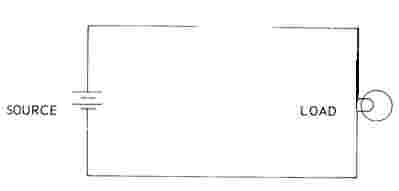
Short Circuit - The load is missing - uncontrolled electron flow results in damage to the conductor or source.
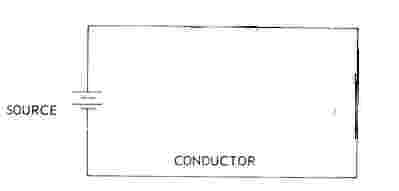
Sources
Mechanical
Generator
Piezo-electric
Heat
Thermocouple
Light
Solar cell
Chemical
Battery
Conductors - free electrons
copper
aluminum
steel
Non-conductors (insulators) - bound electrons
plastic
rubber
glass
Loads
Mechanical
- starter motors
Heat
- defroster grids; heated windshields; block heaters
Light
- vehicle lighting systems
Chemical
- battery charging
Electrical Terms
Electromotive Force (EMF) - is a measurement of electrical potential,
or the amount of
electrical "pressure" available to force electrons through a circuit. It
is measured in
VOLTS. Abbreviation is V, symbol is E.
Current - is a measurement of the rate of flow of electrons
(how many electrons pass
any point in a circuit in a certain amount of time). It is measured in
AMPERES
[or AMPS]. Abbreviation is A, symbol is I.
Resistance - is a measurement the amount that any device will
attempt to restrict electron
flow. It is measured in OHMS. Abbreviation is the Greek letter Omega, symbol
is R.
Ohm's Law
E = I X R
Electromotive Force = Current X Resistance
Volts = Amps X Ohms

Watt's Law
P = I X E
Power = Current X Electromotive Force
Watts = Amps X Volts
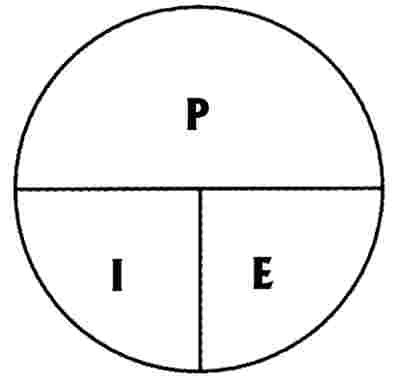
Using Ohm's Law and Watt's Law
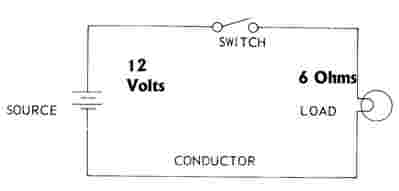
Ohm's Law - the voltage (E) is known and the resistance (R) is
known. The current flow can be calculated using I = E/R -
or
I = 12 volts/6 ohms = 2 amps.
Watt's Law - the power (P) "consumed" in this circuit is found by
using P = I X E - or P = 2 amps X 12 volts = 24 watts.
Series Circuits
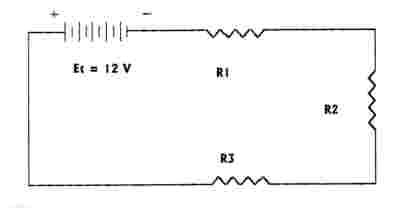
- One path for electron flow.
- An open in a series circuit will affect the entire circuit.
- A short in a series circuit will only affect the shorted load.
- As loads are added, total circuit resistance will increase.
- Current flow is the same at any point in the circuit because there
is only one path to for it to follow.
- There is a voltage drop (or loss of "pressure") at each load depending
on the resistance of the load.
Parallel Circuits
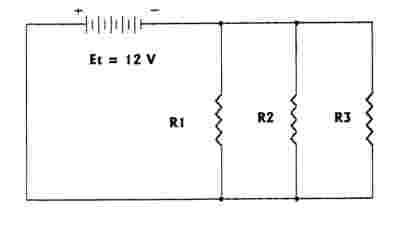
- There is more than one path for electron flow.
- An open in a parallel circuit will only affect that branch of the circuit.
- A short in a parallel circuit will affect the entire circuit.
- As loads are added, total circuit resistance will decrease because more
electrons can now flow in the circuit because there are more paths.
- Current flow in each branch of the circuit will depend on the resistance
- the
most current will flow through the least resistance. Total circuit current
is
found by adding the currents flowing through each branch.
- The voltage is the same, and equal to source voltage, at any point in
the circuit.